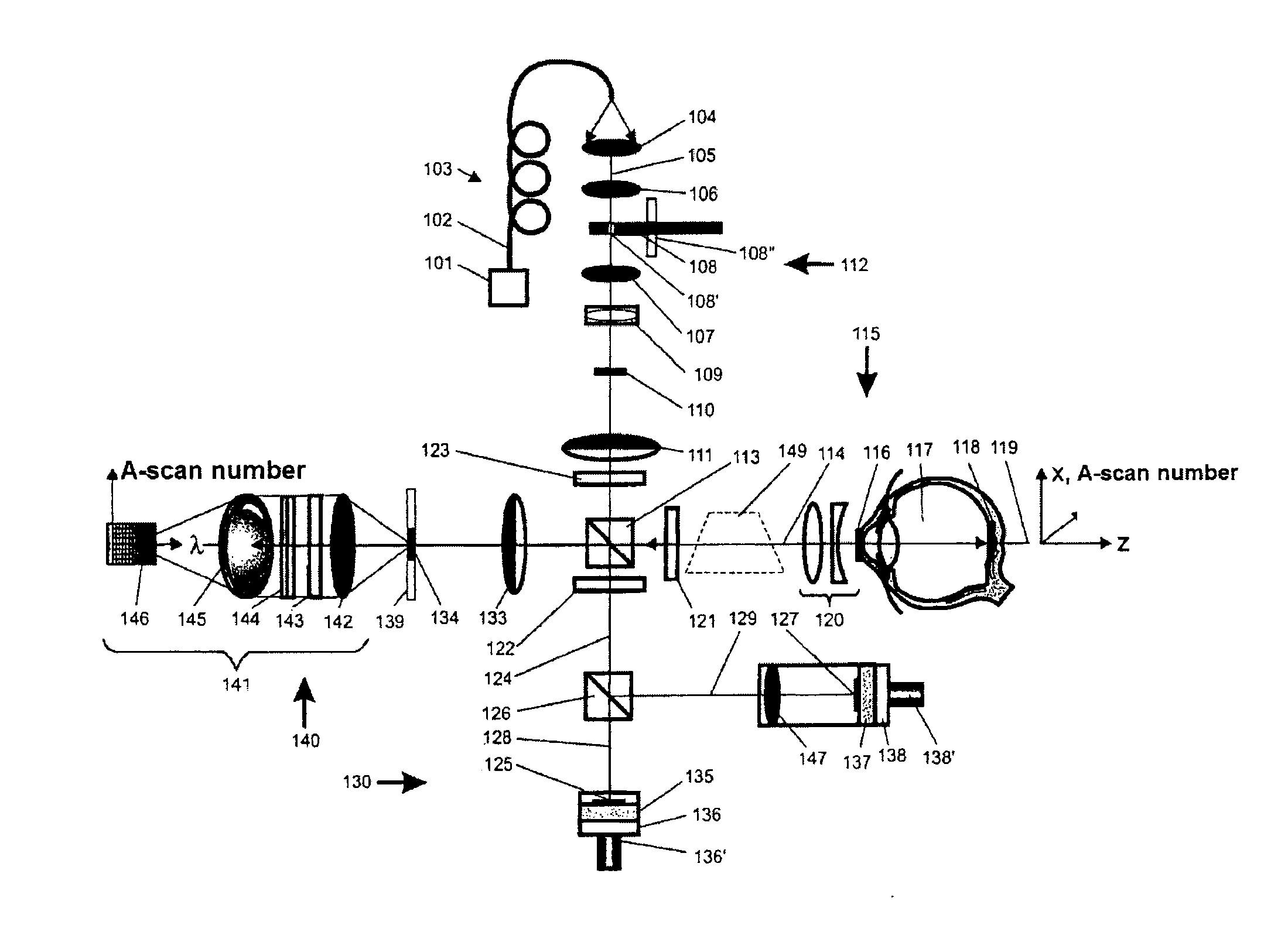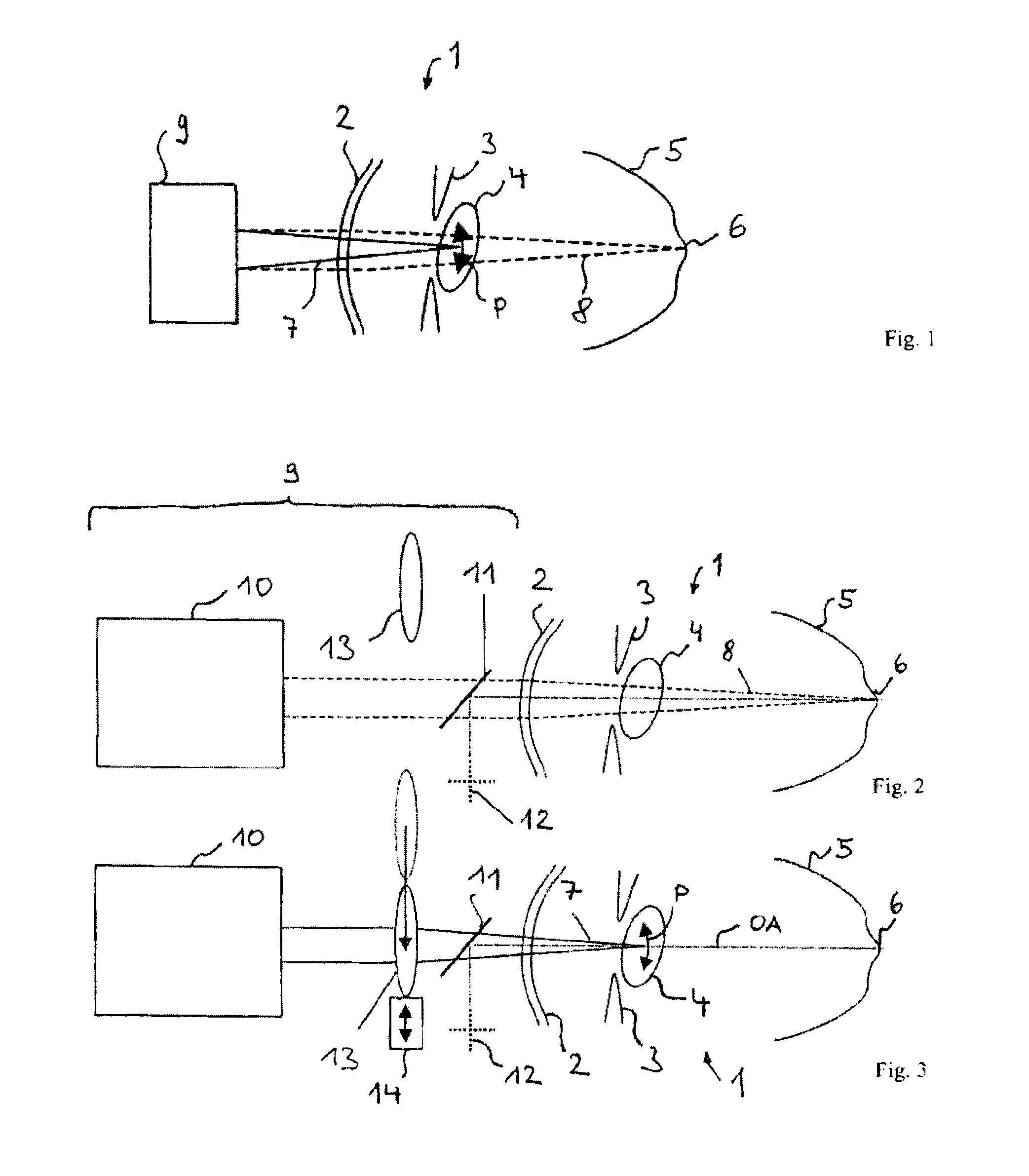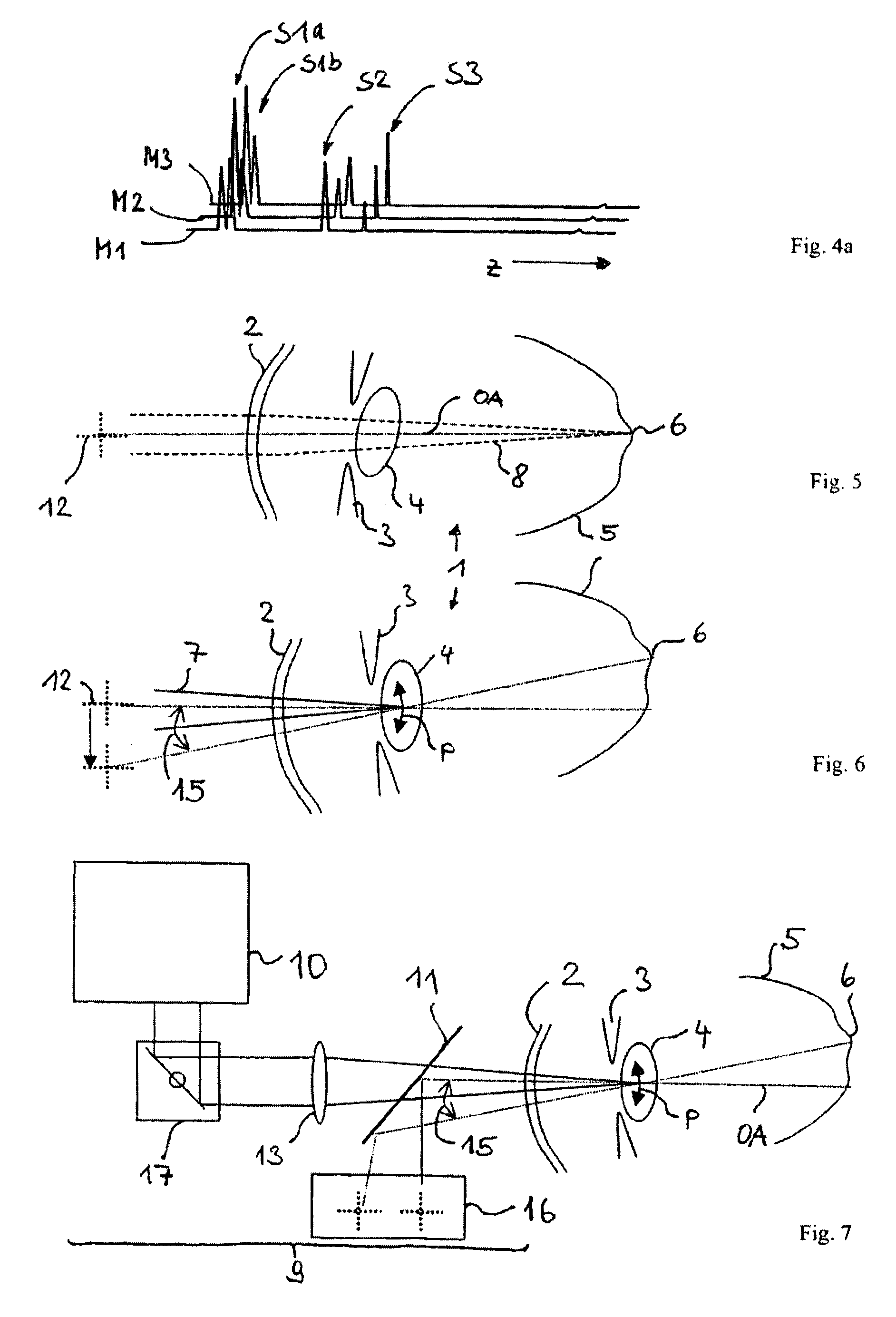Optical coherence reflectometry with depth resolution
- Summary
- Abstract
- Description
- Claims
- Application Information
AI Technical Summary
Benefits of technology
Problems solved by technology
Method used
Image
Examples
Embodiment Construction
[0078]In the interferometric measurement of axial scatter profiles, such as that occurring in the case of optical coherence domain reflectometry, the axial resolution, i.e. the resolution in the depth direction, is given substantially by the coherence behaviour of the source. The resolution is inversely proportional to the total width of the spectrum used for measuring the scatter profile. Transversely in relation thereto, i.e. in the lateral direction, the achievable resolution is given by the lateral extent of the focus, which is referred to here as the focus diameter. In fact, of course, a beam waist is present, and the focus diameter is usually understood to be that size of the beam waist at which the radiation intensity has decreased to a particular value, e.g. 1 / e2.
[0079]The radiation back-scattered from a point on an object is the superposition of the radiation components back-scattered out of the resolved volume. These radiation components can interfere in all stages between...
PUM
 Login to View More
Login to View More Abstract
Description
Claims
Application Information
 Login to View More
Login to View More - R&D
- Intellectual Property
- Life Sciences
- Materials
- Tech Scout
- Unparalleled Data Quality
- Higher Quality Content
- 60% Fewer Hallucinations
Browse by: Latest US Patents, China's latest patents, Technical Efficacy Thesaurus, Application Domain, Technology Topic, Popular Technical Reports.
© 2025 PatSnap. All rights reserved.Legal|Privacy policy|Modern Slavery Act Transparency Statement|Sitemap|About US| Contact US: help@patsnap.com



